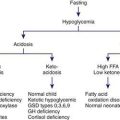Chapter 522 Tubular Function
Water and electrolytes are freely filtered at the level of the glomerulus. Thus, the electrolyte content of ultrafiltrate at the beginning of the proximal tubule is similar to that of plasma. Carefully regulated processes of tubular reabsorption and/or tubular secretion determine final water content and electrolyte composition of urine. Bulk movement of solute tends to occur in the proximal portions of the nephron, and fine adjustments tend to occur distally (Chapter 52).
Sodium
The major hormonal mechanisms mediating sodium balance include the renin-angiotensin-aldosterone axis, atrial natriuretic factor, and norepinephrine. Angiotensin II and aldosterone increase sodium reabsorption in the proximal tubule and distal tubules, respectively. Norepinephrine, released in response to volume depletion, does not directly act on tubular transport mechanisms but affects sodium balance by decreasing renal blood flow and thus decreasing the filtered load of sodium as well as stimulating renin release. With more-severe volume depletion, antidiuretic hormone is also released (Chapter 524). Sodium excretion is promoted by atrial natriuretic factor and suppression of renin.
Potassium
Extracellular potassium homeostasis is regulated because small changes in plasma potassium concentrations have dramatic effects on cardiac, neural, and neuromuscular function (Chapter 52.4). Essentially all filtered potassium is fully reabsorbed in the proximal tubule. Therefore, urinary excretion of potassium is completely dependent on tubular secretion by potassium channels present in the principal cells of the collecting tubule. Factors that promote potassium secretion include aldosterone, increased sodium delivery to the distal nephron, and increased urine flow rate.
Calcium
A significant portion of filtered calcium (70%) is reabsorbed in the proximal tubule. Additional calcium is reabsorbed in the ascending loop of Henle (20%) and the distal tubule and collecting duct (5-10%). Calcium is reabsorbed by passive movement between cells (paracellular absorption) in a process driven by sodium chloride reabsorption and potassium recycling into the lumen. In addition, calcium uptake is actively regulated by calcium receptors, specific transporters, and calcium channels. Factors that promote calcium reabsorption include parathyroid hormone (released in response to hypocalcemia), calcitonin, vitamin D, thiazide diuretics, and volume depletion (Chapter 564). Factors that promote calcium excretion include volume expansion, increased sodium intake, and diuretics such as mannitol and furosemide.
Acidification and Concentrating Mechanisms
Acidification and concentration are addressed in the sections on renal tubular acidosis and nephrogenic diabetes insipidus, respectively (Chapters 523 and 524).





